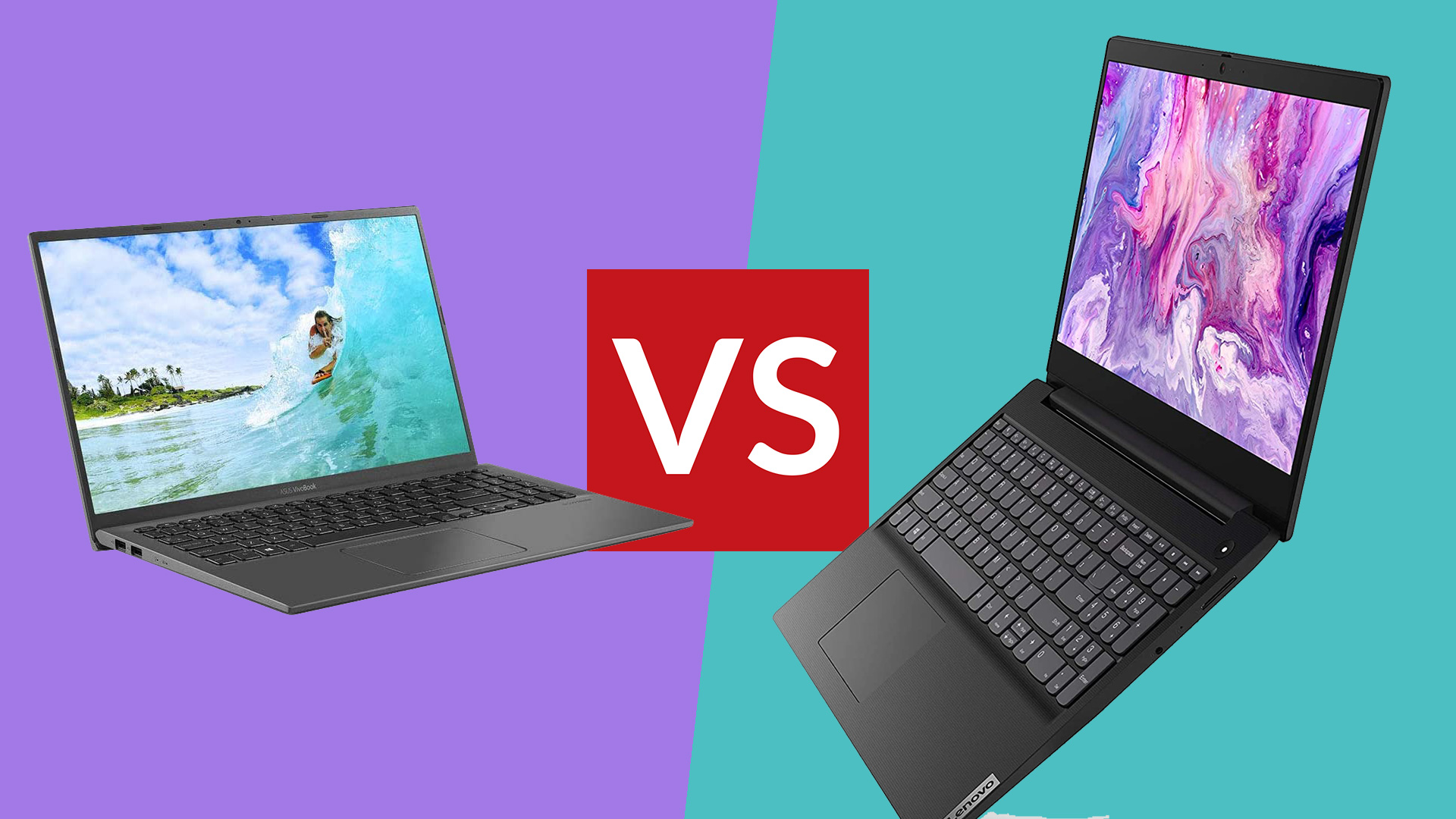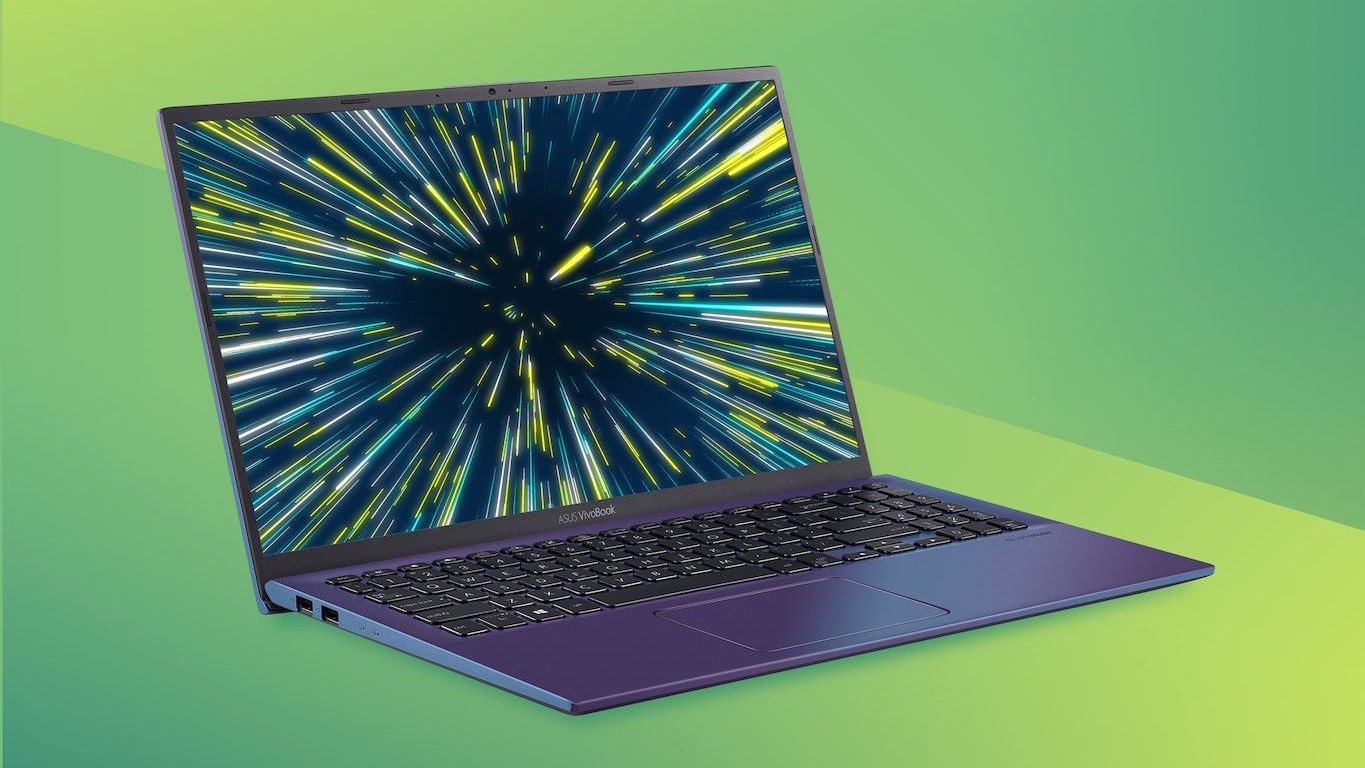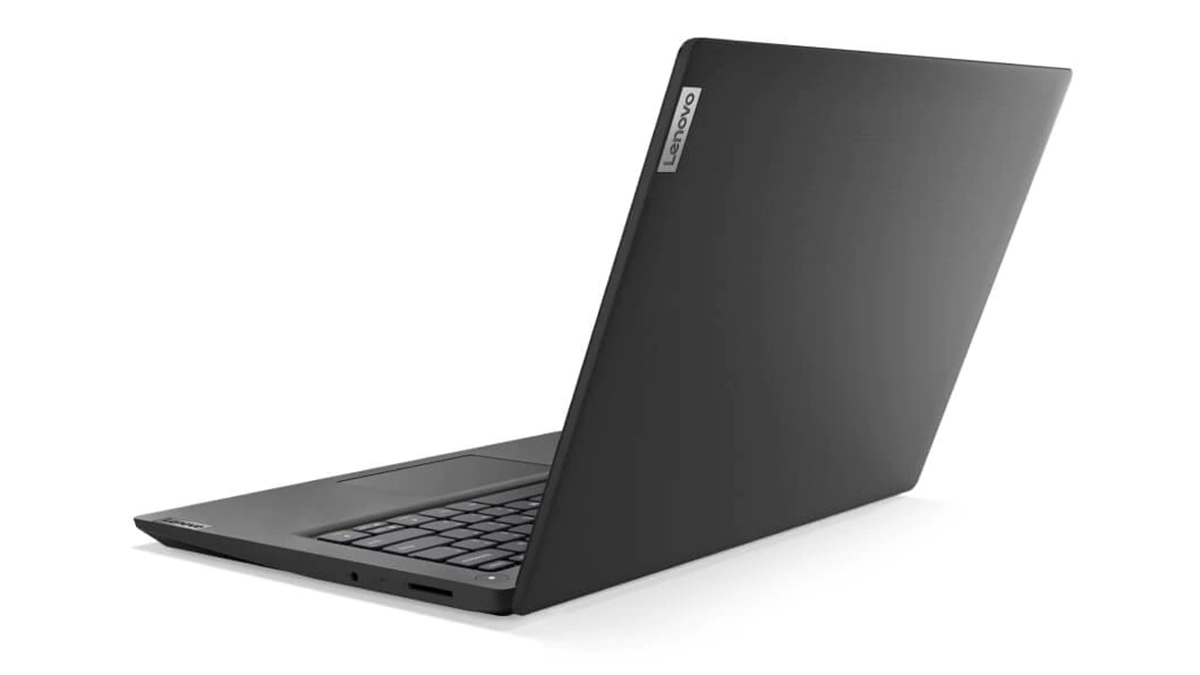Asus Vivobook 15 vs Lenovo IdeaPad 3: Two powerful but affordable laptops go head-to-head
The Asus Vivobook 15 vs Lenovo IdeaPad 3 both deliver performance and value in a single big-brand package, but which laptop is best?

Want a big brand laptop? Prepare to stump up major cash, right? Not necessarily so. Asus and Lenovo are the among the best regarded brands in the business and both the Asus Vivobook 15 and Lenovo IdeaPad 3 are available with a full feature set, placing them among the best laptops under £500.
For starters, the Asus VivoBook 15 and Lenovo IdeaPad 3 tick a lot of the same boxes, including critical features like a quad-core AMD Ryzen 3000 series processor, 8GB of system memory and 256GB SSD. Even the battery specifications are very similar. But there are also some subtle and not-so-subtle differences that separate the two.
Quick note here – if you're shopping on a tight budget then considering one of the best Chromebooks or best student laptops could be just as effective for you in finding your ideal system. Chromebooks obviously mandate a change to Chrome OS, but providing you're happy with a system geared toward online use, you'll likely be very happy indeed.
Look closely and you'll spot a few detailed contrasts when it comes to connectivity, for instance. When it comes to style, on the other hand, the gap is a little bigger. The Asus trades on slim bezels which don't just look contemporary. They make for a smaller chassis. That may not be a major practical distinction for a laptop that's mainly doing duty as a daily driver desktop replacement. But if you're regularly on the move, a touch more portability might be welcome.
In this article, we put the Asus Vivobook 15 and Lenovo IdeaPad 3 head to head to help you figure out which is the best laptop for you.
Asus Vivobook 15 vs Lenovo IdeaPad 3: Design and screen
At the £500 price point around which these laptops sit, the Asus VivoBook 15 really is a looker. A lot of that is down to the slim-bezel design. With side bezels measuring just 5.7mm, the Asus VivoBook 15 achieves a healthy 88 percent screen-to-bezel ratio.
By comparison, the Lenovo IdeaPad 3 has much larger bezels top and bottom. Visually, that makes for a less up-to-date look. But it also means the Lenovo is the larger laptop. The Asus Vivobook 15 is half a centimetre shorter, but also fully two centimetres shallower in width, plus 150g lighter. Both laptops are just under 20mm thick.
Get all the latest news, reviews, deals and buying guides on gorgeous tech, home and active products from the T3 experts

These aren't huge differences, overall, but they do make the Asus a little more portable and also ensure it's the slightly sleeker, more expensive feeling laptop. That's despite the fact that both sport exactly the same 15.6-inch LCD panel proportions with FullHD 1080p resolution. For the record, these two laptops share similarly generous keyboard layouts, complete with a dedicated numberpad. Each also has an integrated HD webcam ready for those critical Zoom calls.
Connectivity-wise, these laptops are pretty closely matched. Both have three USB-A sockets, two of the Lenovo's are 3.1 Gen 1 5Gbps spec, while just one of the Asus's matches that spec, the other two are plain old USB 2.0 ports. However, the Asus counters with a USB-C socket, again in 5Gbps spec. The omission by Lenovo of a USB-C port on the IdeaPad 3 is pretty conspicuous here in 2021.
Elsewhere, the contest is pretty tight. You get Wi-Fi 5, otherwise known as AC spec, wireless networking on both laptops, plus Bluetooth and a webcam. Battery-wise, the Asus VivoBook 15 has the slight edge courtesy of its 7Wh lithium pack. The Lenovo IdeaPad 3's battery weighs in at 35Wh.
- Asus VivoBook S15 vs Lenovo IdeaPad 3: See how the Vivobook's pricier sibling matches up
Asus Vivobook 15 vs Lenovo IdeaPad 3: Specs and performance
Both of these laptops are available with a choice of AMD Ryzen 3000 series CPUs. At around the £500 mark, you're looking at an AMD Ryzen 5 3500U for both laptops. It's a couple of generations old now that AMD has released its hot new Ryzen 5000 mobile chips.
But it's still a solid quad-core model with a 2.1GHz baseclock and boost up to 3.7GHz. It's plenty of CPU for day-to-day tasks and will even turn its hand to a little content creation like video encoding. As for graphics, you get an AMD Vega integrated core with 512 shaders, which actually matches the best AMD integrated core from the new Ryzen 5000 family, albeit the new chip is clocked significantly higher.

Lenovo IdeaPad 3
Anyway, it's a good enough graphics solution for a little light gaming, just don't expect a good experience in newer, more demanding titles. You won't get it. Other key metrics at this price point are likewise very evenly matched. Whether you go for Asus or Lenovo, you'll get 8GB of system memory and a 256GB M.2 NVMe SSD.
Combined with that AMD CPU, the result is good all round performance with no obvious weak points. For daily computing, both laptops are snappy and responsive. Most users simply won't need more performance. For the most part, only the likes of content creation professionals and gamers will find either of these laptops coming up short for performance.
One exception to that is battery life. Both systems are capable of over six hours of real-world operation away from the mains. But you'll need to spend more if you want true all-day battery life. If that applies to both systems, it's the Lenovo that falls a little short when it comes to screen quality. It matches the Asus in terms of its 1,920 by 1,080 pixel native resolution. But the Lenovo's 220nit TN panel is a little disappointing in terms of brightness, punch, contrast and viewing angles. At this price point, you can have and arguably should demand a decent IPS panel.
Asus Vivobook 15 vs Lenovo IdeaPad 3: Price and verdict
The Asus Vivobook 15 and Lenovo IdeaPad fall very much into the same price bracket (at time of writing, for the specifications discussed here, there's £20 in it). However, prices for this class of laptop fluctuate pretty regularly. So, you need to keep on your toes to get the best deals – check out the widgets below to see the best prices for each in your territory right now.
Both systems represent pretty stellar value. It's nice to know that a full-feature laptop with a FullHD screen and no major specification weak spots can be had for under £500, that's for sure. As for our pick, it's a close contest and for most people, most of the time, there will be very little in it. But we'd go for the Asus primarily on account of its sleeker, slim-bezel styling and that USB-C port. That USB-C port is something we'd miss pretty badly on the Lenovo.